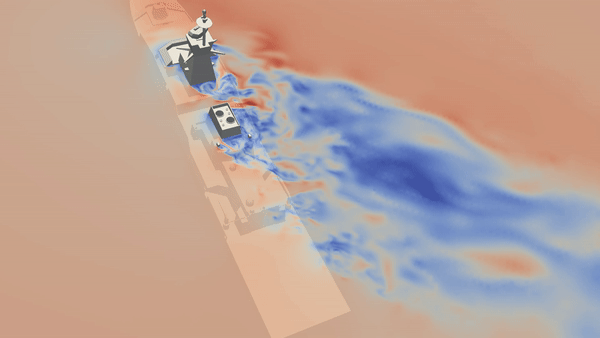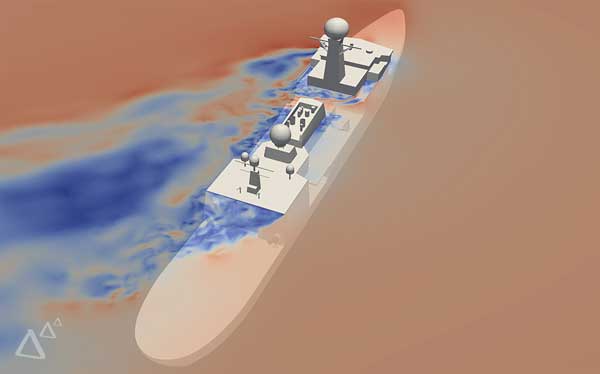
The aerodynamic environment is a major contributor to the challenges facing operators when they conduct aviation operations in the vicinity of a ship. Air flowing over the ship’s superstructure, known as the ship airwake, generates turbulence, causes localised updrafts and downdrafts, and interferes with anemometer readings. Ship airwake can transport ship exhaust gases into the path of approaching aircraft.
Prism Defence uses state-of-the-art computational fluid dynamics (CFD) techniques to simulate ship airwakes, allowing our experts to:
- title of drop list
- predict turbulence over the flight deck and helicopter approach path
- predict temperatures and exhaust gas concentration over the flight deck resulting from exhaust gases
- assess likely error of ship anemometer readings due to ship airwake effects
- assess the impact of changes to topside configurations and the effect that they may have on published Ship–Helicopter Operating Limits (SHOL)
Combining advanced turbulence-resolving models with an in-house high-performance computing cluster, Prism Defence can accurately predict aerodynamic features that might adversely affect ship–air operations.
Introducing CFD analysis early in the design or procurement cycle is highly cost-effective and provides:
- early and informed input to ship design
- optimisation of anemometer placement
- derivation of installed anemometer errors
- predictive risk management prior to the commencement of flight trials
Prism Defence’s in-house CFD capability is backed up by numerous validation studies and published academic papers. The CFD capability has been refined over many years to provide a robust and flexible solution which can be tailored to suit specific customer needs.


